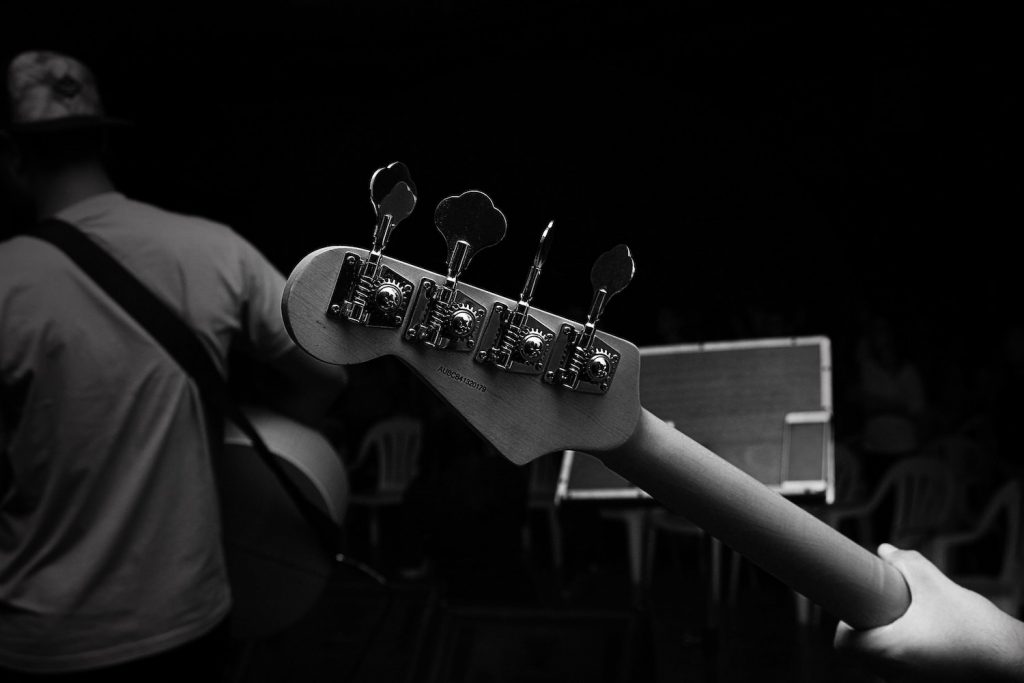
All About That Bassline: Finding that Funky Bass for Your Next Pop Song Hit
Have you ever had the perfect song idea, but didn’t know how to give your track a full sound because there is not enough low-end sounds?
Sure, you have the beat lined up, and you may even have a few chord ideas and an established key, but you are going to want a little oomph to make your song memorable from even the first few notes.
Finding the right bassline for your song can be intimidating. How can you be sure you are playing the right notes? How can you be sure to have the right rhythmic hook that listeners can sink into?
A repetitive bassline can really define the backbone of your song in tandem with the percussion section, so it may be easier than you think.
Looping a creative bassline is easy, and it can help you define a song’s tone and style. Today, we will be looking at how to construct a bassline in your Digital Audio Workstation (DAW), and what makes different styles of basslines distinctive.
A Solid Bassline Is One of the as a Core Element
When you are constructing the track for a certain song, you will be working with a few different elements, such as the drum track, the chord progression, and the melody or vocal track.
The final component to the mix is the bassline, and together with the percussion, they make a solid musical background for your entire song.
Many new musicians and songwriters are curious as to what they should begin working the track with such the melody, bassline, or drum track.
Sometimes the melody comes first, sometimes the bassline will come first, and sometimes you will want to set the tempo of the song first and foremost with the drum track.
However you decide to start your song, you will want to add the bassline and percussion next if you have not already done so. A bassline can be repetitive if it is catchy enough to hold the listeners attention throughout the song.
Free Tools That Help You Construct a Bassline in Your DAW
Constructing a bassline in your DAW with a professional grade sound quality can be difficult. Even if you have a bass and can play it, you will need to invest in certain expensive equipment such as microphones and stands to capture the audio effectively.
This is where MIDI and VST plugins become very useful. You can construct a professional sounding bassline straight into your DAW system using certain VST plugins specifically designed for a crisp and flat bass line.
Here are a few tools that you can use for free to construct a killer bassline:
| Piano Scales | Shows you what notes can be played in a certain key |
| TAL – Elek7ro | A great bass line synthesizer with high quality customizability and tools |
| Ample Sound – Ample Bass P Lite II | A more simple bass synthesizer, great for rock band or alternative music |
| Synister | A user-friendly all inclusive bass synthesizer perfect for any sound |
All of these tools are free for you to use, and you should take advantage of them.
Bassline Melody Construction: Get Yourself in the Groove
There have been millions of basslines that have trekked themselves through years of changes such as the walking bass or the 12-bar blues, and there are millions of new ways to construct a bassline.
The secret is to get into the studio and start trying a few things out. Trust your musical intuition and play around with one of the bass synthesizers. Play around with a new piano scale and see what happens.
There are quite a few examples to look at though, and a few styles that have emerged from repetitive basslines that are found in certain genres.
Take a look at some of the different kinds of basslines below:
- Following the Changes – One of the simplest ways to create a bass line is to follow the chord chart and play the root for each chord. This gives you a standard harmonic structure for the chord changes in your song. You can play the root of the chord on beat 1 and the third or fifth of the chord on beat three, although this may give you a folky or vaudeville sound that you are not going for.
- Playing Time – If you are a little more advanced at construction, you may be able to play the root, third, or fifth of the chord changes deciding which sounds the best for each chord. Experiment with the rhythm and try to play over the bar-lines.
- Walking Bass Line – This concept was heavily developed by the jazz era, and it is a technique that employs playing certain extensions of each chord on each quarter note. This gives the song a driving, nostalgic sound.
- Riffs – Start with any of the techniques above, and then manipulate the melody of the vocal line by adding a catchy riff to the end of the musical phrase. This will give your song better phrasing and musical syntax.
- Bossa Nova – The Bossa Nova groove is more about rhythm, but it can be a great tool to make an impressive bassline. A Bossa Nova bass grove will emphasize the following beats in an 2-bar phrase: 2, 3, (1)+, (2)+, (3)+, (4)+. The plusses indicate the space between the beats, or as many musicians say, the and of the beat. Do not emphasize the strong beats in the second bar of the phrase, only the ands (+).
- Afro-cuban, Latin, or South American patterns – Again this is more about the percussion patterns available for you to use. Check out examples of the Afro-cuban, Latin, or South American rhythmic patterns, and assign certain notes from your chord chart with the rhythmic inspiration. Now you are starting to master your bassline like a pro.
Master a Bassline with a Professional Quality
Now that you have the right tools and knowledge to create the perfect bassline for your song, nothing is stopping you from getting into your groove.
Check out some of the available options and tools that will help with your bassline construction, and always listen to music that inspires creativity. Get in that studio and start banging out those killer basslines!









